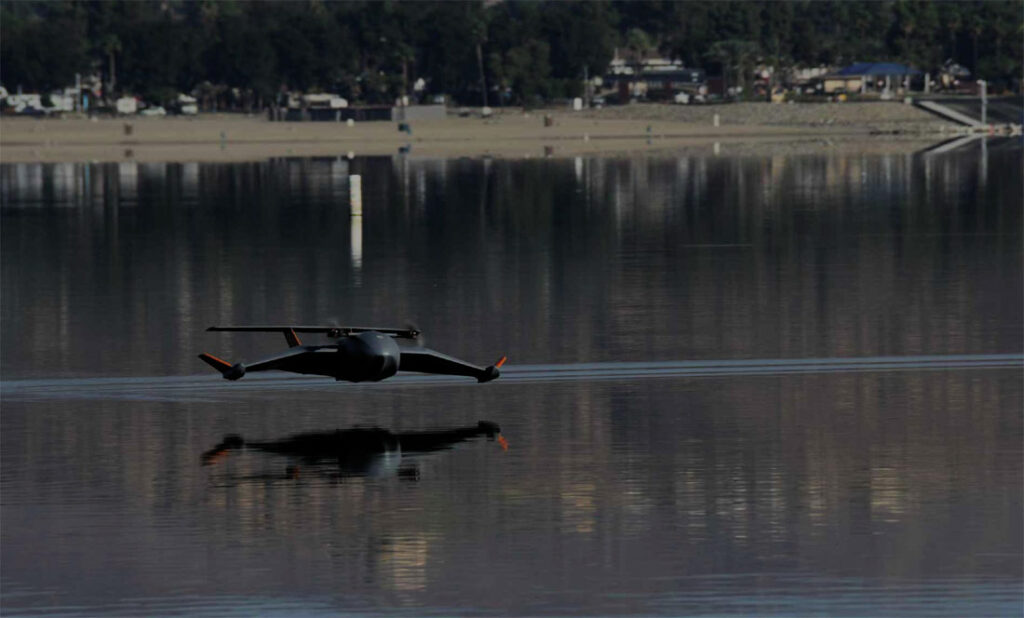Autonomous sea-skimmer performs over 70 test flights

(Image courtesy of Flying Ship)
Flying Ship in the US has shown the design of an autonomous sea-skimming vessel that is 10 times faster than a boat and a quarter of the cost of an aircraft, writes Nick Flaherty.
It has performed over 70 test flights using ground effect, flying 2 m above water. This wing-in-ground (WIG) design uses the extra lift that comes from the reflection of air from the surface of the wafer as the craft ‘flies’. This creates a cushion of air that boosts the overall efficiency of the design.
Five different-sized craft are planned, capable of carrying loads from 20 kg, with a 10 ft wingspan as a test vehicle for the sensors up to 2500 kg with a range of 2,300 nautical miles.
Sister company Ground Effect Technology is developing the design, which uses a Lidar laser sensor to detect obstacles and maintain a maximum height above the waves of 2 m (6 ft). This means the design will operate alongside other waterborne craft and must use the same collision avoidance rules as conventional shipping – a key requirement for autonomous algos.
This puts the craft into the Class A category in the Maritime Regulations, which allows for operation only in ground effect.
The first version being designed is 36 ft long with a fully electric motor able to carry a 1100 kg (2500 lb) payload with a 300 nautical mile range. A larger version is being planned to carry larger payloads using a hybrid electric powertrain that generates power for the electric motors from a generator using traditional fuels.
Using the ground effect and constant load generator together increases the efficiency of the design, allowing a longer range or larger payload.
Ground effect lets the craft land on a beach or small slipway to deliver supplies to out-of-the-way locations and disaster zones where docks are unavailable.
UPCOMING EVENTS























